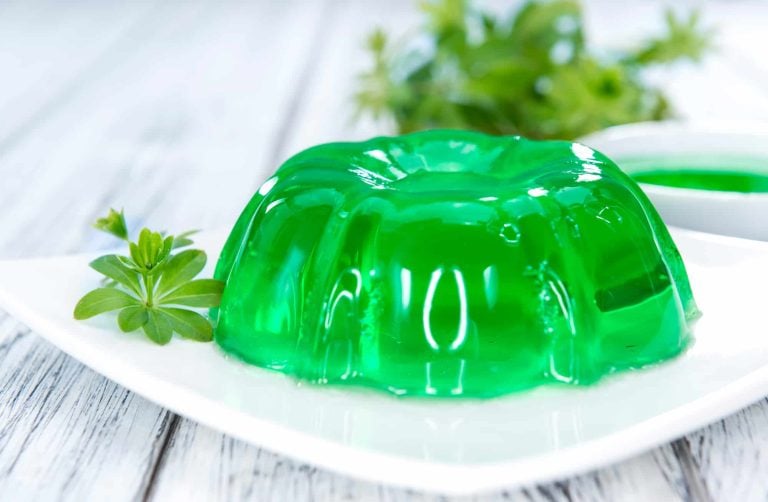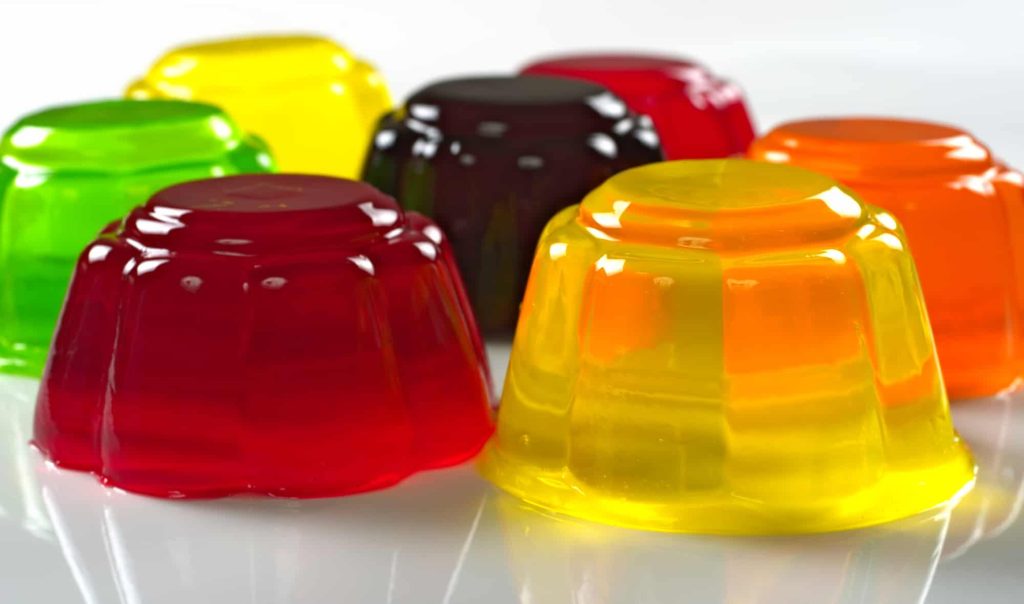Jelly Ace is a popular jelly snack that has been enjoyed by both children and adults for generations. With its soft, squishy texture and a variety of fruity flavors, it has become a staple treat in many households.
This delightful snack has even made its way to social media, where fans can connect with the Magnolia Jellyace page on Facebook, showcasing the brand’s dedication to its consumers.
What are the Ingredients in Jelly Ace?
The basis of Jelly Ace lies in the combination of simple ingredients, which typically include gelatin powder, sugar, and fruit juice.
The process involves melting and combining these ingredients, followed by pouring the mixture into molds and allowing it to set in the refrigerator for at least a couple of hours.
Once solidified, the jelly-like consistency makes for a refreshing and satisfying snack that is both fun to eat and versatile enough to be enjoyed in various recipes or on its own.
Types of Jelly Ace
Among the varieties of Jelly Ace, some common ones include fruit-based flavors, peanut-filled jelly ace, and caramel-flavored options. The most popular of all is probably the lychee flavor.
Fruit-based jelly ace flavors (like the lychee one) often use fresh fruit juices, such as orange, strawberry, or melon, to provide a refreshing taste to the snack. These can be homemade using ingredients like fruit juice, sugar, and gelatin powder, or purchased pre-made in various online stores.
The fruit-based Jelly Ace is an excellent choice for those who enjoy fruity flavors and a more refreshing jelly.
Another type of Jelly Ace is peanut-filled, where a layer of peanut paste or crushed peanuts is added at the center of the jelly.
Peanut-filled jelly ace offers a delightful contrast of flavors and textures as the soft, smooth jelly combines with the nutty, crunchy peanuts. This option caters more to those who enjoy peanut butter or other nutty flavors in their snacks.
Caramel-flavored Jelly Ace is made by incorporating caramel flavoring into the jelly mixture, resulting in a rich, sweet taste reminiscent of caramel candies.
Some variations of caramel jelly ace may also include a drizzle of caramel sauce on top to enhance the overall flavor. This type offers a more dessert-like experience, perfect for those with a sweet tooth.
Are There Any Nutritional Benefits of Jelly Ace?
Although primarily consumed for their taste and texture, Jelly Ace treats can also provide some nutritional benefits by offering small amounts of vitamins and minerals found in the fruit juices used during the preparation stage.
However, it is important to remember that moderation is key, as these snacks can also contain added sugars and artificial flavorings. Overall, Jelly Ace remains a beloved treat that continues to bring joy to those who indulge in its delightful and nostalgic flavors.
Have you ever wondered if all fruit juices are gluten-free, including those ingredients in jelly ace? We’ve included that in our coverage too! This could provide you with valuable insights into which juices align with your dietary preferences.
How Can You Make Jelly Ace?
The process of making Jelly Ace is quite simple, as it mainly involves mixing hot water with the gelatin powder and the desired flavoring.
One common recipe for homemade Jelly Ace involves using fresh orange juice, white sugar, and gelatin powder, such as Mr. Gulaman.
After mixing these ingredients, the mixture is poured into molds and allowed to be set in the refrigerator until it achieves the desired consistency. YouTube videos are available to guide you through this process.
Jelly Ace Recipe
One popular recipe for Jelly Ace involves using fresh fruit juices and gelatin powder. Here’s a quick and easy recipe for you to try:
Ingredients:
- ½ cup fresh orange juice (freshly squeezed)
- 2 tbsp white sugar
- 1 tbsp gelatin powder (e.g., Mr. Gulaman)
Procedure:
- In a small saucepan, combine the orange juice, sugar, and gelatin powder. Mix well to dissolve the sugar and gelatin.
- Heat the mixture over medium heat until it reaches a gentle simmer. Keep stirring to ensure the mixture does not stick to the bottom of the pan.
- Pour the mixture into a jelly mold or a small, flat container. If you want individual servings, you can also use an ice cube tray or small silicone molds.
- Allow the jelly to cool at room temperature for a few minutes, then transfer it to the refrigerator. Chill for at least 3-4 hours or until the jelly has set and is firm to the touch.
- Once the jelly is set, gently remove it from the mold or container, and serve as desired.
This recipe is just one of many variations that can be made using different fruit juices, such as carrot, apple, and lemon for an ACE jelly. You can also experiment with different flavored gelatin powders to add variety to your Jelly Ace desserts.
Jelly Ace is not limited to homemade recipes. There are commercial brands available, such as House Food’s Jelly Ace, which provides a jelly base that can be easily made by mixing hot water at 80°C (176°F), with flavors like strawberry and melon.
This jelly ingredient is known for its slightly nostalgic taste and the ease with which it can be prepared. More information on House Food’s Jelly Ace can be found here.
Beyond desserts, Jelly Ace has also inspired certain games, with “how-to-play” tutorials available on YouTube, demonstrating creative ways to enjoy this classic jelly treat. In summary, Jelly Ace is a versatile jelly snack, enjoyed for its simplicity in preparation and variety of flavors, bringing joy to those who consume it.
History of Jelly Ace
Jelly Ace is a popular brand of jelly candies in the Philippines, known for its fruity flavors and soft, gelatinous texture. It belongs to the broader category of jelly sweets, which have been enjoyed across the world for centuries.
The origins of gelatin-based desserts can be traced back to the 18th century when Hannah Glasse first recorded a recipe for jelly in her book, The Art of Cookery. This type of dessert eventually became a staple in both English and American cookbooks during the 19th century.
Though Jelly Ace’s conception is more recent, it follows suit in utilizing gelatin as a primary ingredient. Gelatin is a protein derived from animal collagen found in bones and skin, which helps give jelly sweets their familiar wobbly consistency when dissolved in hot water and cooled to set.
Jelly candies, like Jelly Ace, owe their origins to earlier confections such as Jelly Babies, which were first manufactured in England during the 19th century. These soft sugar jelly sweets were introduced in various colors and shapes, influencing the development of other similar candies around the world.
While the precise beginnings of Jelly Ace as a brand are somewhat unclear, this beloved Filipino snack has built upon the rich history of jelly-based sweets. It has become a staple in local stores, often enjoyed as a nostalgic treat by both children and adults alike.
The success of Jelly Ace demonstrates the enduring popularity of gelatinous sweets, which have come a long way since their original inception in the 18th century.
As you can tell, the history of Jelly Ace is deeply intertwined with the evolution of jelly sweets throughout the centuries, drawing upon both regional and global influences to create a distinctive and well-loved Filipino treat.
Where to Buy Jelly Ace
Sourcing the original Jelly Ace brand might be challenging in some areas, with consumers sometimes being faced with overpriced or knock-off alternatives.
If you’re not in the Philippines, the best place to find real, high-quality Jelly Ace is at a Filipino grocery store or bakery. Ask around your local Filipino community to get recommendations on the best spots.
When you’re at the store, check the packaging to make sure it’s an authentic brand imported from the Philippines. Some companies try to pass off inferior knock-offs, which just aren’t the same. Don’t settle for fake Jelly Ace!
In some cases, people have conducted experiments related to the growth of fungi on stored Jelly Ace products, emphasizing the importance of proper storage and finding the real thing. Good luck, and enjoy!







Comments are closed.